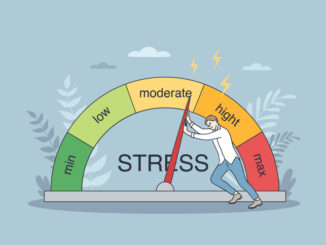
Stephen Peach, assistant headteacher and business manager, Dacorum Education Support Centre, discusses the power that words hold and how you can make sure you’re using your words wisely
We often make light of situations by trying to diminish the power of words.
We use expressions like, ‘Actions speak louder than words’, or ‘Talk is cheap’ or, better yet, ‘A picture is worth a thousand words’. When things get really bad, we comment, ‘Sticks and stones may break my bones, but names will never hurt me’. Except we all know that’s rubbish. The effects of a badly chosen sentence can take a lot longer to recover from than physical injuries.
We know that words have amazing power – the power to hurt or heal. Think of the difference between people’s reactions when told the words, ‘You’re hired’ or ‘You’re fired’. There may only be a single letter that’s different between those two sentences, but the people’s reaction to each could not be more opposite.
We know the power of words that have hurt us, and we’ve all seen the power of our own words that hurt others. Someone has said that words are like eggs dropped from a great height – you can’t get them back and you can’t avoid the mess they make. If you think about things that have been said to you over the years, you’ll see what I mean. There’s a world of difference between ‘I love you’ and ‘It’s over’ and the effect of either can last a lifetime.
Teachers spend a lot of time thinking about the words they use to students; in my school we even go so far as to have agreed scripts that we use in given situations to maintain consistency among all staff (‘That’s not appropriate language, thank you.’) So why is it that staff – and, in my experience, senior staff in particular – frequently seem to leave their brains at the door when talking to colleagues? It’s almost as if they decide that all their training and experience is not relevant when talking to adults so they say the root of what’s in their heads without ever considering the effect it will have on others.
Some of the time, I suspect it’s because they are working at such a pace that they don’t stop to consider the consequences of their words; they just need to impart some information in the shortest time possible before moving on to the next item on their to-do lists. Frequently, however, this approach can leave a trail of needless devastation in its wake which takes time to repair.
As leaders and managers we need to be aware that the intent of our words can vary wildly from the Impact they have; despite our best intentions, we can’t predict the impact our words will have on others. We all receive information through our own personal filters, prior experiences that act as lenses, influencing our present-day responses. (All of this is detailed in Transactional Analysis (Eric Berne) and the PAC model (parent/ adult/child) states of communication). Which leads us to the question; how do we guide our words to create the impact we want?
Building bridges
You may have seen, or been trained in, ‘Insights’, the different personality types of people (red, blue, green and yellow) and the associated focus on communication. Developed by Carl Jung, it provides a helpful framework for communicating, not only for categorising different personalities, and behaviours, but also suggests potential responses to build effective bridges between personality types. Insights works best when you work out your own natural communication colour and then that of people around you so you can adapt your own style to match that of the person you are communicating with.
Simplified further, all behaviour is a spectrum between ‘foreign exchange traders’ and ‘conspiracy theorists’ with a variable of passion thrown in. (If you’re a foreign exchange trader or conspiracy theorist, please just hear me out!) At one end of the spectrum, some people will only trust numbers and are deeply sceptical of interpretations that may skew their meaning – typified by foreign exchange traders. They see numbers as unarguable facts that avoid human interpretation which are the only certainty that can be trusted. Meanwhile, at the other end of the spectrum are the conspiracy theorists, people who will only ever trust their feelings and are deeply sceptical of anyone who uses numbers.
How do you communicate with people at any stage on this spectrum? You can’t fight feelings with numbers, and you can’t fight numbers with feelings and, if you’re not careful, you end up fighting fire with fire! You have to find a way to wrap your message in language that the person you are talking to will resonate with and relate to.
Do you have a member of staff who doesn’t get subtle hints? What do you do? Tell it to them straight, removing all vagueness and ambiguity from the words you use. Using this reasoning you can work out that, if someone is numbers-based, demonstrating where their numbers might give misleading information, and trying to provide alternative numbers, might be more successful. If you work out that someone is more feelings-orientated, don’t go anywhere near numbers or you’ll put them off.
Are you the kind of business manager/leader who prefers to use sticks as opposed to carrots to motivate people? How do you think this makes your team feel? How often do you say ‘Well done’? What would the effect be on your team if you did? Or do you mistake niceness for kindness? Being ‘nice’ is about pleasing other people, which is often not possible as a manager. Kindness, however, involves caring about people, delivering difficult information with empathy and interest in a way that emphasises the significance of the conversation to the other person.
When was the last time you said, ‘Thank you’ to the people you oversee? If the answer to that is, ‘Not recently’, I would encourage you to do it today and watch the reaction you get. People appreciate it when their efforts are noticed – even the ones who normally rely on numbers!
Invoking these kinds of feelings is precisely what we strive for when interacting with children, but so often we forget that adults (merely older versions of children, don’t forget) have the same needs as young people, to function and perform at their best.



Be the first to comment